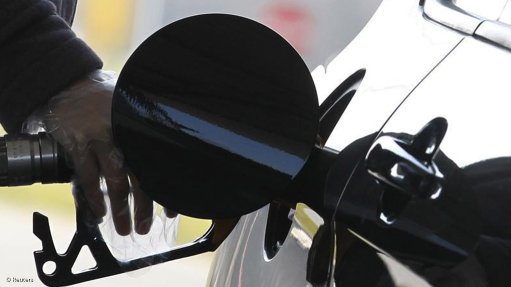The hybrid generation system is here to stay
Joseph Schumpeter once wrote: “There is certainly no point in trying to conserve obsolescent industries indefinitely; but there is a point in trying to avoid their coming down with a crash and in attempting to turn a rout into an orderly retreat.”
This is not about renewables per se, as renewables will not be a panacea, but what they are doing is that they are driving the future of new, evolving power systems, which, in some countries, will evolve much faster than in others.
If anything, the distributed nature of renewables simply alludes to a mature phase of a technology evolution opening an architecture for a distributed model that is likely to be followed by other modular technologies that may not be renewables in nature or simply hybrid forms of technology. This is the essence of renewables within a distributed generation (DG) model. The question, simply, is: What is the extent to which we will live with a top-down system, as opposed to a more interactive and customer-orientated model of power generation?
What is certain, however, is that a system of only large plants and long wires is over. In the central model, the key feature is the baseload concept and the customer is the end-user and receiver of services. The grid is unidirectional, and the intelligence of the system is dependent on a central controller. The user has little say, and the system is designed around the needs of the central controller, not the user.
Mixed, or hybrid, systems combining features of both the central and decentralised systems are evolving fast, allowing greater flexibility for the provider and users at the same time. Pure decentralised systems are not a reality yet, and we will not see them dominating for a long time to come. They are dependent on the evolution of generation technologies, the smartness of the grid and increased investment in bidirectional grid systems. The crucial issue here is cost reductions: if this happens, outright displacement of the central model will be a disruptor of existing centralised utility models.
Investments in distributed power capacity are increasing faster than investments in central power capacity. By 2020, yearly investments in DG will be about $200-billion, and this will constitute about 40% of global capacity additions, according to a General Electric (GE) report. Global demand for electricity will grow from 21 TWh to 27 TWh, an average yearly growth rate of 3.3%. Most of the growth will be in emerging economies – 4.7% in emerging economies, compared with 1% in developed economies. By 2020, about 65% of global electricity consumption will be in emerging economies.
We are moving towards what GE calls integrated energy networks, which allow a move from baseload to dynamic energy systems management. Hardware and software interfaces are making it more feasible to get real-time information, making it possible for specific and general parts of the network to be optimised simultaneously.
In South Africa, energy security issues are related to the performance standards of the utility rather than a lack of resources to establish generation capacity per se. Performance issues will hamper price predictability and institutional financial stability. Performance issues also affect the cost of capital, owing to credit ratings. Further, performance issues influence the ability to roll out sufficient grid capacity and the ability to maintain transmission and generation assets. The effect of all of this is the ability to institute full cost-recovery measures, as socioeconomic factors will limit the extent to which the utility can directly pass these costs on to consumers. The uncertainty of performance and the pace at which new installed capacity can be effected can lead to an anarchic defection from wealthy consumers if the chance to do so prevails. The long-term consequence of this is that the central utility will sit with overcapacity, if the defection trend is a substantive and higher cost burden.
Finally, with Eskom, you do not get the feeling that it is able to rescue itself from this situation. Even if it does, it will have to contend itself with the potential for disruptive technologies to leave it with stranded assets. Eskom’s problem is internal cohesion and, without it, it cannot think straight about future trends and the challenges they present to its existing model of operating.
Eskom sits between grid anarchy – owing to the forces pushing decentralised forms of generation – and guiding a more rational and managed hybrid system that works for Eskom and its consumers.
So, why is DG becoming so compelling and why may its future hurt Eskom? DG allows for more dynamic and real-time demand and supply solutions to be integrated into one system that is more intelligent. DG options imply lower capital intensity and a lower opportunity cost of misallocation. DG allows distributed assets that are in spare capacity to be used more effectively, such as storage and generation capacity. DG is also unleashing innovation in business models that will also have an influence over the scale and pricing of electricity from these sources. In DG, models should not be seen in isolation of the systems they operate in. It is important to understand the integration of the DG model as a way to optimise the energy system through systems cost saving, adding the power of proximity to customer value and giving them great autonomy from the central utility system.
The crux is that the hybrid model is here to stay. Organisational culture, paradigms and understanding of the world determine the extent to which utilities are able to embrace change creatively or do what Schumpeter talked about: going through the process of creative destruction and self-cannibalisation.
Article Enquiry
Email Article
Save Article
Feedback
To advertise email advertising@creamermedia.co.za or click here
Comments
Press Office
Announcements
What's On
Subscribe to improve your user experience...
Option 1 (equivalent of R125 a month):
Receive a weekly copy of Creamer Media's Engineering News & Mining Weekly magazine
(print copy for those in South Africa and e-magazine for those outside of South Africa)
Receive daily email newsletters
Access to full search results
Access archive of magazine back copies
Access to Projects in Progress
Access to ONE Research Report of your choice in PDF format
Option 2 (equivalent of R375 a month):
All benefits from Option 1
PLUS
Access to Creamer Media's Research Channel Africa for ALL Research Reports, in PDF format, on various industrial and mining sectors
including Electricity; Water; Energy Transition; Hydrogen; Roads, Rail and Ports; Coal; Gold; Platinum; Battery Metals; etc.
Already a subscriber?
Forgotten your password?
Receive weekly copy of Creamer Media's Engineering News & Mining Weekly magazine (print copy for those in South Africa and e-magazine for those outside of South Africa)
➕
Recieve daily email newsletters
➕
Access to full search results
➕
Access archive of magazine back copies
➕
Access to Projects in Progress
➕
Access to ONE Research Report of your choice in PDF format
RESEARCH CHANNEL AFRICA
R4500 (equivalent of R375 a month)
SUBSCRIBEAll benefits from Option 1
➕
Access to Creamer Media's Research Channel Africa for ALL Research Reports on various industrial and mining sectors, in PDF format, including on:
Electricity
➕
Water
➕
Energy Transition
➕
Hydrogen
➕
Roads, Rail and Ports
➕
Coal
➕
Gold
➕
Platinum
➕
Battery Metals
➕
etc.
Receive all benefits from Option 1 or Option 2 delivered to numerous people at your company
➕
Multiple User names and Passwords for simultaneous log-ins
➕
Intranet integration access to all in your organisation
















